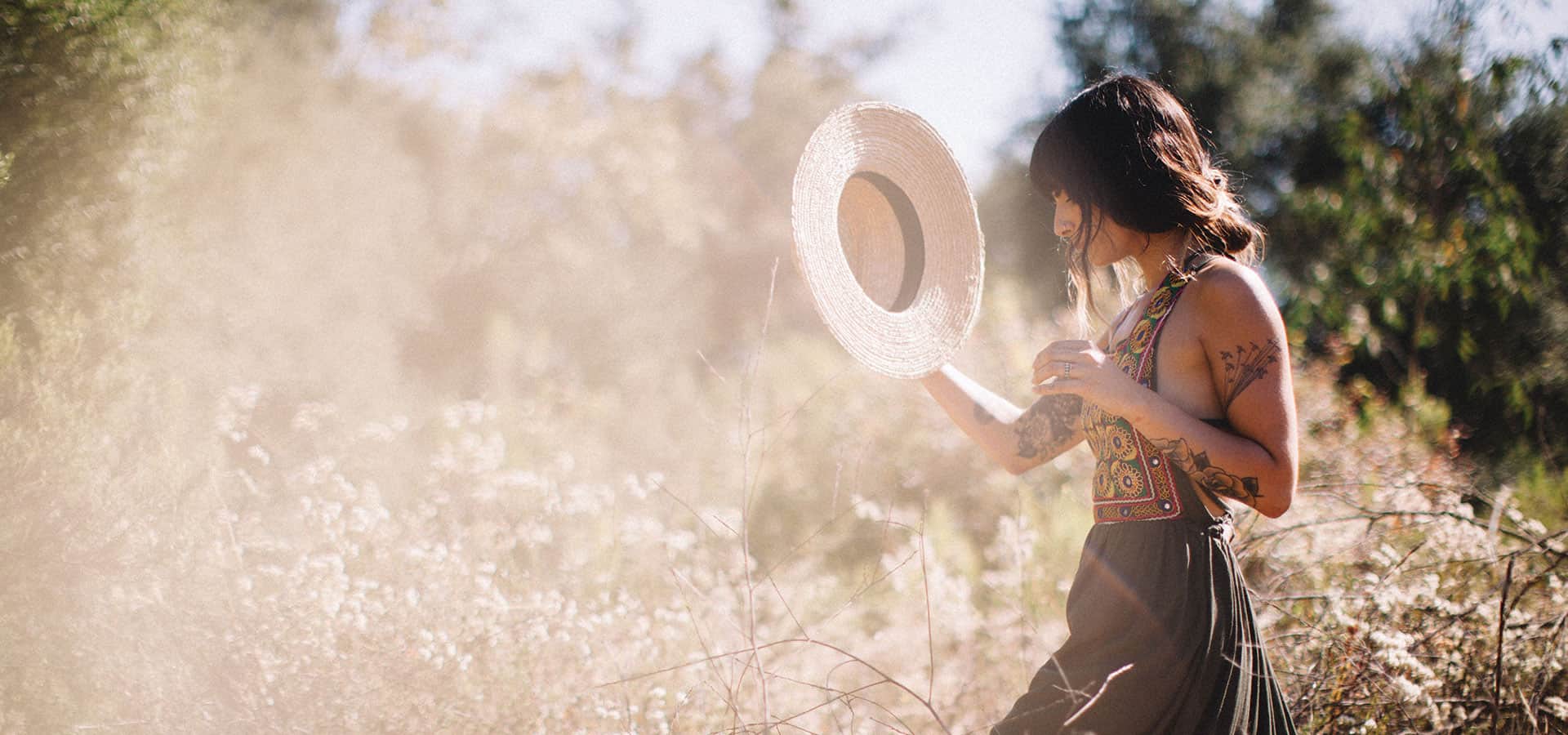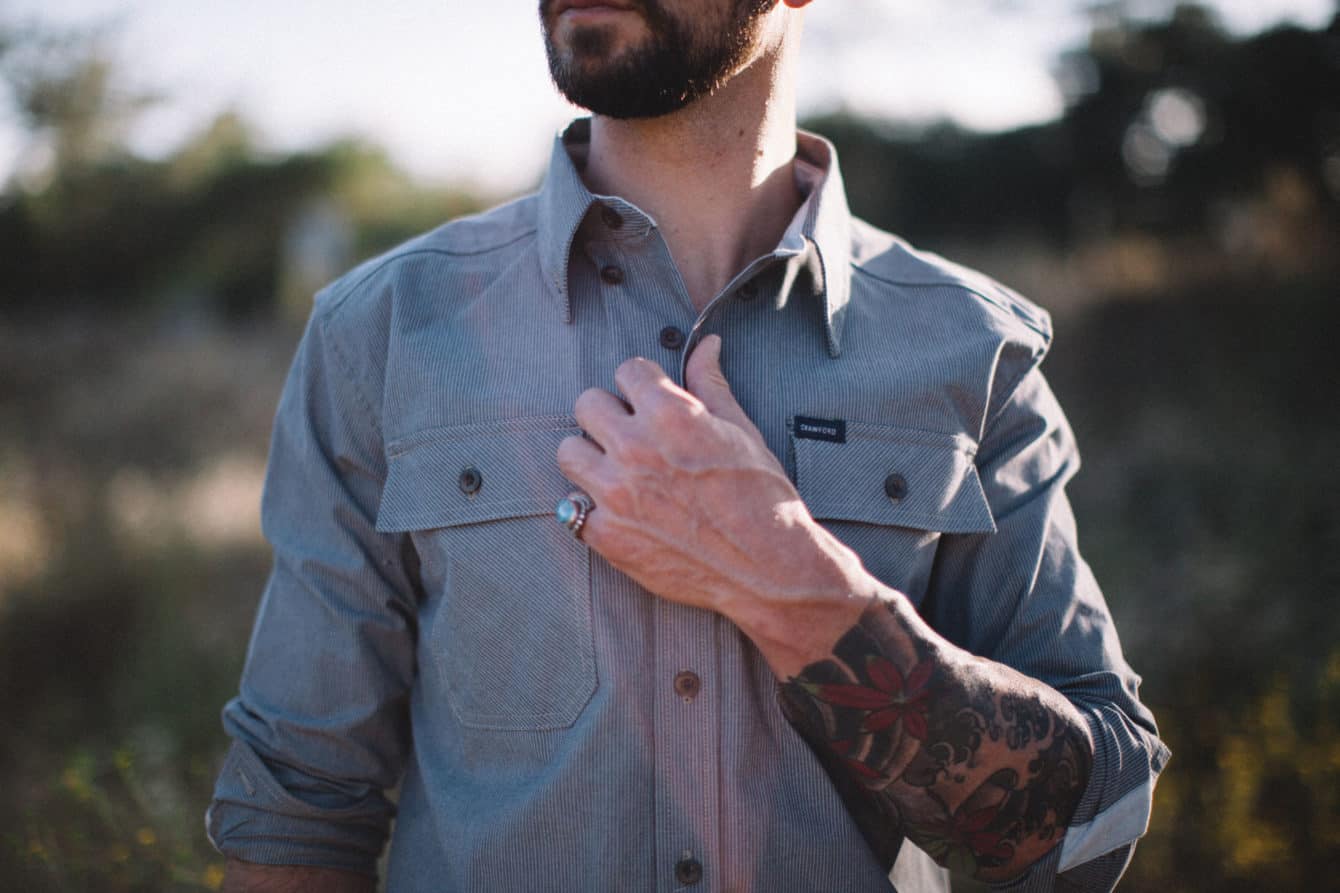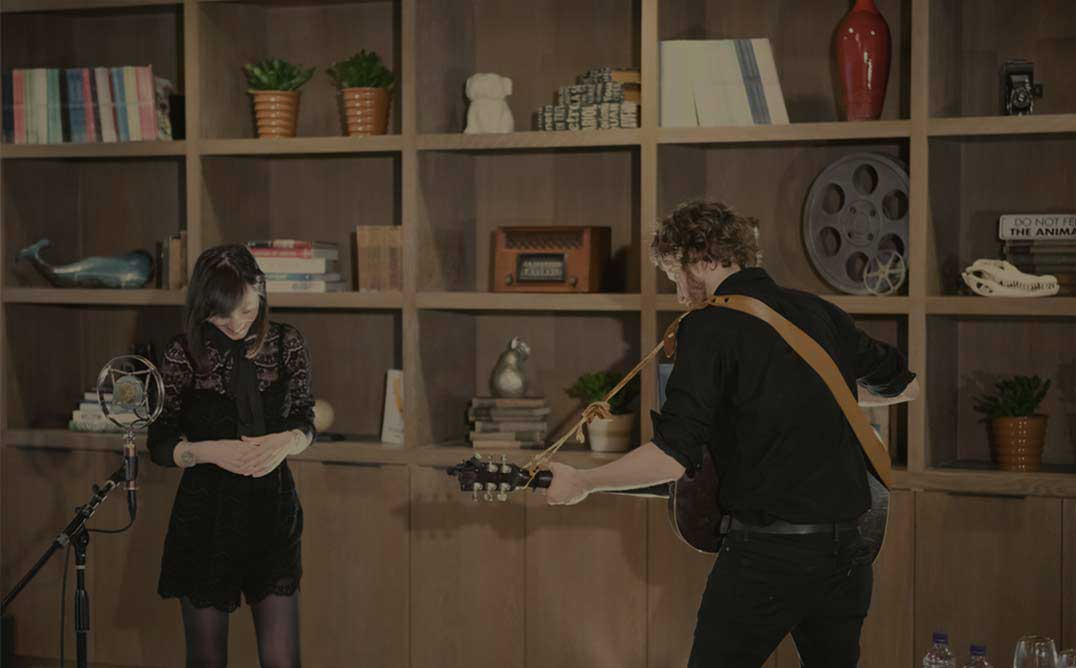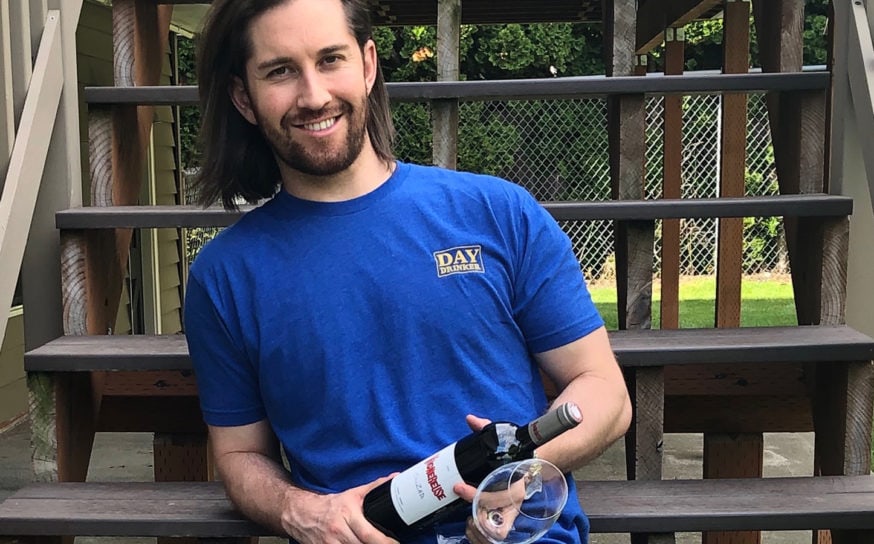
Handcrafted in California, Crawford Denim Is the Perfect Fit for Designer Susie Shaughnessy
The road was nowhere easy, but the destination certainly worth the ride.
-
CategoryArtisans, Makers + Entrepreneurs, Small Businesses
-
Written byTanya Monaghan
-
Photographed byRenata Stone
In the middle of her Manhattan Beach living room, Susie Shaughnessy is helping a young designer work on a long folding table. The first thing you notice about her is her huge, sparkling blue eyes. She smiles and introduces the young man she’s assisting. He is quick to describe how incredibly helpful, amazing and supportive Susie is before politely excusing himself.
This scene is an accurate reflection of Susie’s true character: selfless, extremely humble and someone who you would want as a friend. Yes, she is driven—she runs her own fashion company, Crawford Denim, and hardly sleeps. But somehow she still finds time to help others.
Susie was raised in a large family in the Bay Area of Northern California. She is the middle child of five children. They all attended Berkeley for college, and she attributes this pattern to the influence and guidance of their mother.
Having a father who was a teacher and football coach also helped. He was the first one in his family to graduate college and valued that education. She reflects back on her childhood with a laugh—describing it as filled with a lot of healthy competition and an emphasis on school, arts, sports and music. They were each given the freedom to focus on what they were uniquely interested in.
At Berkeley, Susie majored in fine arts with a minor in costume design. Her costume design experience was integral to the path she would later take as a fashion designer.

Because she had some previous sewing experience, she was able to hop on the machines right away and contribute to the costume design department. She worked closely with her professor (whom she is still friends with today) and later became his assistant teacher in his last years of teaching at Berkeley.
She costumed several shows and worked on some major productions for Berkeley, specifically in their dance department. A highlight was dressing dancers from Martha Graham’s original cast, who later became her protégés. She considers the experience invaluable—learning everything she would have learned in design school but in a more “hands-on” manner.
During the last semester of school, Susie earned an internship at a very small local design company where she also managed all aspects of the business. She laughs, “It was these experiences that gave me the tools to literally start my own business in my own living room, which is what I am doing now!”
Although she had a wealth of knowledge and experience under her belt, to get her foot in the door Susie went to work for Levi’s as their phone operator. Because she didn’t have an accreditation from a design school, most fashion companies wouldn’t give her a chance. So she did what she had to do.
As fate would have it, the day before Susie interviewed for an open position as a design assistant, the head of design came in to make some business cards and saw Susie’s sketches. She interviewed with her the next day and got the job as her design assistant in the fabric and finished development department. Susie worked with all the mills and saw firsthand how the jeans were made and produced at the factories.
She went on to do more hands-on designing, working on tops and bottoms for Levi’s. She worked there for five years—an experience that gave her the foundation to get where she wanted to go. She took jobs at several other denim companies and then landed one at GUESS, where she learned about domestic production in the U.S. Not only was she designing product, but she was also learning how to manufacture it.

After a couple years at GUESS, Susie took a job at O’Neill—an opportunity to design an entire collection under Kris Bergeron. She describes him as one of the most brilliant designers she’s ever worked with. They had a lot of freedom to choose which designs they wanted to work on based on what they were feeling at the time, and they often collaborated with one another. The family-run atmosphere made for an intimate experience she truly enjoyed … so much so, she still freelances for them from time to time to this day.
She took a job offer at Old Navy so she could move back home to be with her mother, who had been diagnosed with cancer. She was able to spend the last year of her mother’s life by her side, which was a true gift.
She stayed with Old Navy for eight years to be close to her family, whom she needed for support at that difficult time. It also afforded her the opportunity to save money for her future plans to create her own fashion brand.
“The pain doesn’t get easier; it’s just that you grow more accustomed to it,” she shares. “Losing a parent is like losing the history and connection to the person who knows you the best.”
She named her new company Crawford Denim after her mother’s family name. It is an important part of keeping her mom’s memory and heritage alive.
The Crawford family comes from Susie’s grandmother’s side; she was a first-generation immigrant from Portugal and married a Crawford. Her uncle on her mother’s side is the last to carry the Crawford name, and he is proud to wear his namesake jeans. On Crawford Denim’s first photo shoot, he is photographed in his jeans on his ranch.
The photographs and subject matter made for a truly authentic ad campaign. “What’s behind the brand is a lot of family, a lot of history and a lot of ‘Americana’ heritage,” says Susie. “It’s all integrated into a California lifestyle, and how we show stories about it is what we want to promote.”

Crawford Denim is also U.S.-manufactured. Susie wants to make people aware that you can still manufacture domestically in small batches and be able to promote small businesses in the U.S. “I know this is really political at this point, but I started doing this six years ago when this wasn’t really a topic of conversation,” she says.
Susie set out to bring U.S. manufacturing back—especially after the economy tanked at the end of 2008. It was a way she could not only help create jobs with livable wages within the industry but also bring back the heritage that had been lost.
“Even though the machinery is more automated now, you can still be more self-sustaining—being able to produce apparel and upholstery locally,” she adds. “We can really be doing this across the board (not just in L.A. and New York) and help smaller businesses manufacture. It was a lost art form, so it would be nice to regain some of that heritage.”
Susie feels really lucky that she started her journey with Crawford Denim at the same time that a lot of other like-minded people and friends were starting their own brands. They synchronized around the ideas of finding old chain stitch and felling machines, finding people who did this day in and day out, and working with small businesses. They believe in a bigger picture—one where everyone is for each other and for the better of the group as a whole, rather than competing against one another.
She explains, “If one person does well in the industry, then we all do well. And everyone has something slightly different to offer. Small boutiques in turn have more to choose from, and they can offer more for their customers than what they would get at bigger brand name stores. Small boutiques are doing well these days because people want a more intimate buying experience. They are putting their hard-earned money into something of value. To know that something is U.S.-made—or small-batch produced, or is just unique—makes them feel like they are investing in what they wear. They treat that piece with more precious care.”

Susie is sensitive to the fact that not everyone can afford what she makes, so she created a mix of new and vintage clothing. Her inspiration is a mix between the ‘70s era and all things “Americana.” With a $200 price point for her pieces, she hopes to be affordable to her customer but also loyal to those who work for her and pay them a livable wage.
Susie positions Crawford Denim as a vehicle for illustrating how we can be living a “bigger lifestyle.” Crawford uses dead stock fabric so it doesn’t go into landfills. They use recycled goods, and they also contribute back to local businesses. They buy their trims locally in Tustin.
The aim is to be in the communities that are closest to them, similar to the slow food movement—buy from the local farmer and you contribute to everyone’s overall local economy. Susie’s goal is for the line to be fashion that can be worn at any time—a classic and timeless look no matter what period but still on trend with what is current.
It is influenced by icons of style like Steve McQueen and Paul Newman and musicians like Johnny Cash. She laughs out loud at herself: “I mean, look at me. I even wear my hair like Willie Nelson!”
It’s tough to fathom all that Susie does in a day. “It’s part of the faith that you have to have,” she says. “I will work a million different jobs because I know the brand will eventually do well. It’s tricky to begin with because I don’t have outside investors, and every sale I make goes directly back into the company.”
For example, she decided this year that she was going to be dedicated to working the Long Beach Flea Market, and that was where her marketing budget was going. It’s a great venue for people who want to invest in things that are vintage-inspired but also U.S.-made. Everyone leaves her booth with a physical postcard filled with some of her Instagram images—an effective and powerful tool to get the word out.
Susie is inspirational—not only as a creative force but as an entrepreneur. She’s using what she has learned and helping other companies shape their brands. She believes the challenge and goal is to live the life of your company—not just focus on the numbers. When you get this aspect right, she reckons, the message bursts through in a very authentic way.
And this is what makes Crawford Denim stand out: the lifestyle … a timeless fashion piece that exudes an easy and understated coolness. Something truly authentic, just like Susie.
A Smaller Footprint for a Larger Impact
From the food they eat to where they live, Trevor and Maddie Gordon are choosing to do more with less.
The Newport Beach Christmas Boat Parade Sparks More Holiday Magic
Merry & bright in the OC.



















